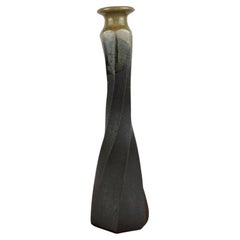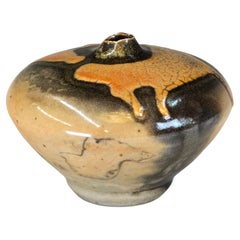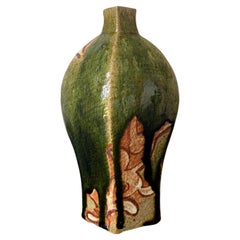Japanese Studio Pottery
Early 20th Century Japanese Pottery
Stoneware
20th Century Japanese Mid-Century Modern Vases
Ceramic
Mid-20th Century Japanese Vases
Stoneware
Early 2000s Japanese Modern Ceramics
Ceramic
Early 2000s Japanese Modern Ceramics
Ceramic
20th Century Japanese Japonisme Ceramics
Ceramic
Early 2000s Japanese Modern Ceramics
Ceramic
Mid-20th Century American Mid-Century Modern Ceramics
Porcelain, Pottery
Mid-20th Century American Mid-Century Modern Ceramics
Porcelain, Pottery
Mid-20th Century American Mid-Century Modern Ceramics
Porcelain, Pottery
Mid-20th Century American Mid-Century Modern Ceramics
Porcelain, Pottery
Mid-20th Century American Mid-Century Modern Ceramics
Porcelain, Pottery
Mid-20th Century American Mid-Century Modern Decorative Bowls
Pottery, Stoneware
20th Century Japanese Modern Ceramics
Pottery, Stoneware
20th Century Japanese Modern Pottery
Pottery
Early 20th Century Japanese Art Nouveau Vases
Pottery
Late 20th Century Vases
Ceramic
Vintage 1980s Japanese Modern Vases
Pottery
Early 20th Century Japanese Arts and Crafts Vases
Stoneware
20th Century Japanese Showa Ceramics
Earthenware
20th Century Japanese Showa Ceramics
Earthenware, Pottery
20th Century Japanese Showa Ceramics
Earthenware
20th Century Japanese Showa Ceramics
Earthenware, Pottery
Vintage 1930s Japanese Art Deco Vases
Pottery
Antique Early 1900s Japanese Art Nouveau Vases
Ceramic
Antique Late 19th Century Japanese Japonisme Ceramics
Ceramic
Vintage 1980s Japanese Mid-Century Modern Vases
Ceramic, Pottery
Mid-20th Century Japanese Mid-Century Modern Vases
Ceramic
Mid-20th Century European Mid-Century Modern Vases
Pottery
Vintage 1950s Japanese Mid-Century Modern Ceramics
Stoneware
20th Century Japanese Mid-Century Modern Decorative Bowls
Stoneware
20th Century Japanese Minimalist Vases
Ceramic
Mid-20th Century Japanese Mid-Century Modern Ceramics
Stoneware
Mid-20th Century Japanese Showa Ceramics
Pottery, Stoneware
Mid-20th Century Japanese Mid-Century Modern Ceramics
Stoneware
Mid-20th Century Japanese Showa Ceramics
Pottery, Stoneware
Mid-20th Century Japanese Showa Ceramics
Pottery, Stoneware
Antique Early 1900s Japanese Art Nouveau Vases
Pottery
Vintage 1950s Japanese Mid-Century Modern Ceramics
Stoneware
Vintage 1950s Japanese Mid-Century Modern Ceramics
Stoneware
20th Century Japanese Showa Ceramics
Stoneware
Vintage 1950s Japanese Japonisme Decorative Dishes and Vide-Poche
Ceramic
20th Century American Mid-Century Modern Vases
Porcelain, Pottery
20th Century Japanese Folk Art Vases
Stoneware, Pottery
20th Century American Mid-Century Modern Ceramics
Pottery, Stoneware
20th Century American Mid-Century Modern Ceramics
Porcelain, Pottery
Mid-20th Century American Mid-Century Modern Ceramics
Porcelain, Pottery
Mid-20th Century American Mid-Century Modern Ceramics
Pottery, Stoneware
Mid-20th Century American Mid-Century Modern Ceramics
Earthenware, Pottery
Mid-20th Century American Mid-Century Modern Ceramics
Porcelain, Pottery
Mid-20th Century American Mid-Century Modern Ceramics
Pottery, Stoneware
Mid-20th Century American Mid-Century Modern Ceramics
Earthenware, Pottery
Mid-20th Century American Mid-Century Modern Ceramics
Earthenware, Pottery
Mid-20th Century American Mid-Century Modern Ceramics
Porcelain, Pottery
Mid-20th Century American Mid-Century Modern Ceramics
Porcelain, Pottery
20th Century Japanese Showa Ceramics
Stoneware
20th Century Japanese Showa Ceramics
Stoneware
Vintage 1980s American Modern Vases
Pottery
Vintage 1970s British Mid-Century Modern Ceramics
Pottery, Stoneware
20th Century American Hollywood Regency Urns
Ceramic
- 1
Japanese Studio Pottery For Sale on 1stDibs
How Much is a Japanese Studio Pottery?
- How do I identify Shino pottery?1 Answer1stDibs ExpertApril 5, 2022To identify Shino pottery, study the surface under a magnifying glass. On authentic pieces, you will see tiny holes all along the surface of the pottery. Real Shino will also usually have a heavy white glaze with noticeable red scorch marks created by the firing process. You'll find a collection of expertly vetted Shino pottery on 1stDibs.
- What is Japanese pottery called?1 Answer1stDibs ExpertApril 5, 2022Japanese pottery is called tojiki or yakimono. Various types have names of their own. For example, porcelain made during the Edo period is arita-yaki, while blue and white porcelain is seto-mono. On 1stDibs, shop a selection of Japanese pottery on 1stDibs.
- 1stDibs ExpertApril 5, 2022To identify studio pottery, look on the bottom of the piece for a maker's mark. Then, use an authoritative online resource to determine which artisan uses the mark. A licensed art appraiser can assist you if you have difficulty identifying the pottery on your own. On 1stDibs, shop a large selection of expertly vetted studio pottery.
- 1stDibs ExpertApril 5, 2022There are 47 different prefectures in Japan and each one produces ceramic ware and pottery unique to that region. Japanese Pottery, known as Tojiki or Yakimono, combines art and tradition and reflects the culture of the region. Shop a collection of Japanese pottery from some of the world’s top sellers on 1stDibs.
- 1stDibs ExpertMay 3, 2024Opinions vary as to what is the most famous type of Japanese pottery. A few kinds of pottery that originated in Japan have gained fame and are popular with collectors. Among them are Arita or Imari ware, Seto ware, Mino ware, Tokoname ware, Shigaraki ware, Kutani ware and Onta ware. Shop a wide variety of Japanese pottery on 1stDibs.
- Is Japanese pottery valuable?1 Answer1stDibs ExpertApril 26, 2024Yes, some Japanese pottery is valuable. Generally, the type, style, age, maker and condition affect how much a particular piece is worth. Some varieties of Japanese pottery that often sell for high prices due to demand among collectors include Imari ware, Mino ware and Seto ware. A certified appraiser or knowledgeable antique dealer can give you specific information about whether a particular piece is valuable. On 1stDibs, shop a diverse assortment of Japanese pottery.
- 1stDibs ExpertSeptember 23, 2024To identify studio pottery marks, you can first try photographing the marking and performing a reverse image search. In some cases, this approach will lead to a quick identification. When it doesn't, you can enter a description of the marking into a search engine or look for images of the marks in trustworthy reference guides. If you need further assistance, seek the advice of a certified appraiser or knowledgeable antique dealer. On 1stDibs, explore a diverse assortment of pottery.
- 1stDibs ExpertAugust 8, 2024To tell if your Japanese pottery is antique, look for markings, which usually appear on the bottoms of pieces. If you see the word "Nippon," your piece was likely produced between 1891 and 1921, making it an antique. Pieces marked with the words "made in occupied Japan" originated between 1945 and 1952 and are vintage, based on their age. A "made in Japan" marking may indicate a vintage or contemporary piece. If you don't see any of these markings, consult trusted online resources to get a rough idea of when your pottery was produced. Any piece that dates back 100 years or more is antique. Should you encounter difficulty with the dating process, a certified appraiser or knowledgeable antique dealer can assist you. On 1stDibs, shop a variety of Japanese pottery.
- 1stDibs ExpertSeptember 23, 2024Japanese blue pottery is called sometsuke. When translated literally from Japanese, the word means "with dye." It refers to the fact that sometsuke pottery gets its beautiful color from applying a cobalt dye underglaze on white bisque ceramic. Find a wide variety of Japanese pottery from some of the world's top sellers on 1stDibs.








